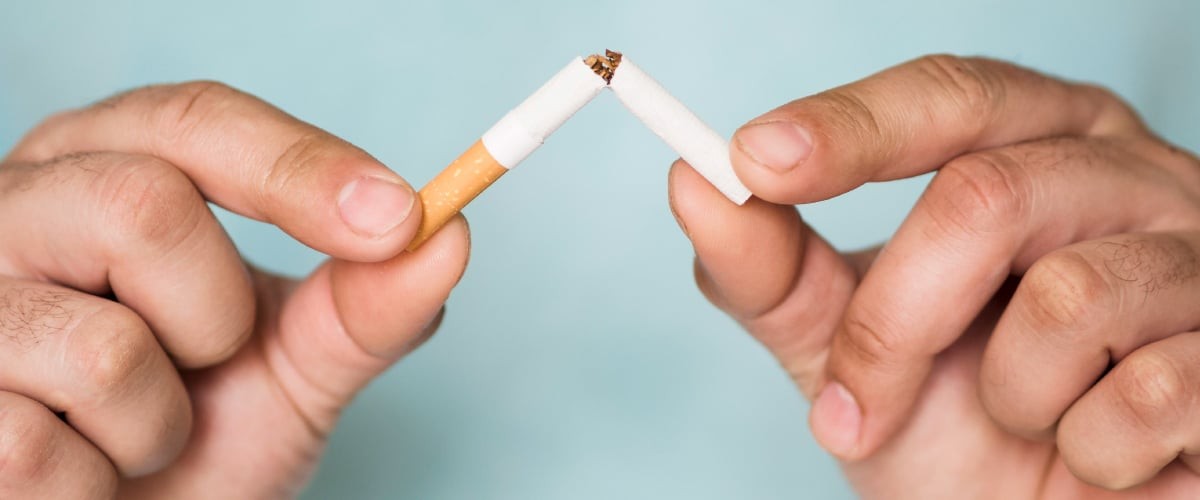
The Dangers of Secondhand Smoke and How to Avoid Them
Secondhand smoke exposes non-smokers to the same toxic chemicals as smokers. Learn the grim statistics on the health risks and get tips for avoiding secondhand smoke exposure in your home, car, workplace and community.
Dangers of Secondhand Smoke and How to Avoid Them
We all know that smoking is incredibly harmful to one’s health. The litany of smoking-related diseases like lung cancer, emphysema, and heart disease has been drilled into our minds for decades.
However, the risks don’t just apply to smokers themselves – secondhand smoke exposes nonsmokers to many of the same toxic chemicals present in cigarette smoke. This involuntary exposure has been proven to be extremely hazardous, especially to vulnerable populations like children, the elderly, and those with respiratory issues.
According to the Centers for Disease Control and Prevention (CDC), secondhand smoke exposure causes around 48,697 lung cancer deaths among non-smoking adults each year in India.
It can also increase risks for heart disease by 25-30%, as well as stroke risks. For children, secondhand smoke greatly increases risks for sudden infant death syndrome (SIDS), respiratory infections, ear infections, severe asthma attacks, and slowed lung growth and function. In pregnant women, it causes low birth weights.
The statistics around secondhand smoke paint a grim picture. In India alone, secondhand smoke exposure causes 41,000 deaths per year. It is responsible for nearly 900 infant deaths annually.
And while attitudes have shifted against smoking indoors in many places, around 50 million non-smokers are exposed to secondhand smoke each year. With such grave risks from breathing in these toxic particles and gases, taking steps to limit secondhand smoke exposure is crucial for protecting yourself and your loved ones.
Key tips for avoiding secondhand smoke:
- Make your home and vehicles 100% smoke-free. By not allowing any smoking indoors, you eliminate exposure to secondhand smoke in the places you and your family spend most of your time. This rule needs to be followed strictly without exceptions, even for brief smoking sessions. Establishing a total smoking ban indoors is especially important when children are present, as their smaller lungs are particularly vulnerable.
- Avoid places that allow smoking indoors. Be conscious of steering clear of restaurants, bars, casinos, bingo halls, pool halls, or other businesses that still permit indoor smoking. Their ventilation systems cannot eliminate the health risks from secondhand smoke exposure. It’s generally safer to eat and socialize at smoke-free establishments.
- Ask smokers to step outside. If you have visitors at your home who would like to smoke, politely request that they go outside instead. Don’t be afraid to firmly assert your rights to smoke-free air in your own living spaces. Let smokers know this is for health reasons, especially if children will be around.
- Be aware of thirdhand smoke residue. The toxic particles from cigarette smoke can linger on surfaces like clothes, furniture, walls, and vehicles long after smoking occurred. This residue is called thirdhand smoke, and it can still cause harm through ingestion or absorption through the skin. Consider getting a smoker’s jacket or shirt laundered separately if possible, or avoiding items that reek of smoke.
- Support smoke-free policies in your community. Advocate for 100% smoke-free workplace rules and local laws prohibiting smoking indoors and at public gathering spots like parks, beaches, playgrounds, fairgrounds, and parade routes. Many communities have made great strides in establishing smoke-free zones, but constant civic engagement is required to uphold and expand these protections.
- Speak up about secondhand smoke risks. Help educate others, especially friends or family members who smoke, about the profoundly damaging impact that secondhand smoke has on the health of those around them.With smokers making up only 14% of India’s population, the vast majority of victims of secondhand smoke are non-smokers simply going about their lives. They may be unaware of just how dangerous this exposure is. Breaking the generational cycle of smoking starts with raising awareness.
- By taking these common-sense precautions and protective measures, you can drastically reduce the amount of secondhand smoke exposure for yourself, your family, colleagues, neighbours, and others you care about. Non-smokers should not have to breathe toxic air against their will in their homes, workplaces, vehicles, or community spaces. After tobacco smoke infiltrates an interior space, it can take hours for the air to be adequately purified, putting all occupants at risk in the meantime.
We all have a basic human right to breathe clean, smoke-free air and not be subjected to the thousands of hazardous chemicals present in secondhand smoke. Minimizing your exposure protects your circulatory health, lung function, and overall well-being both now and far into the future.
While societal attitudes have shifted dramatically against public smoking over time, the risks remain ever-present wherever smokers gather. Only through continued public education, stringent regulations, and personal actions to avoid secondhand exposure can we finally eliminate this preventable health threat.
https://mgmcancerinstitute.in/blog/how-to-quit-tobacco-tips-for-a-successful-tobacco-cessation/
Contact Us
Visiting Hours
OPEN 24 hours 7 days a week.
OPD Timings : Monday to Saturday
( 9:00 AM to 5:30 PM )
Appointments
Emergency
Visit the hospital
MGM Cancer Institute
No 119 & 121, Nelson Manickam Road, Raajeswari Street, Rajaram Mehta Nagar,
Aminjikarai, Chennai – 600029
At MGM Cancer Institute, we believe in curing the fear of cancer first. We understand that battling cancer is not just a physical fight, but a mental and emotional one as well. Our dedicated team is committed to providing exceptional healthcare that improves your overall well-being and eases the anxiety that comes with cancer. With a 150-bed facility in the heart of your city, we are here to support you every step of the way.















